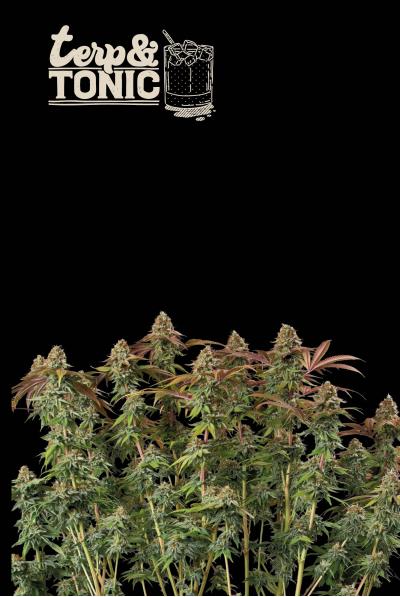Genetic origins of Terp & Tonic autoflowering seeds
So, to get started, let’s delve into the genetic lineage of Terp & Tonic Auto. This strain is not just any old plant: she’s got something special in her DNA that will take you on an amazing adventure! And you’ll understand this fully when you know where she lays her roots.
When our Seedstockers breeders decided to cross two genetics as attractive as Freakum Zkittlez and Ghost Tonic to create our Terp & Tonic Fem, they couldn’t have chosen a better way to complete the process than by bestowing this beauty with the autoflowering genes of our flawless Panty Punch Auto. And, by doing so, they brought the generous yielding capacity of this best-selling variety to everyone. If you’re already familiar with these three parent strains, you’ll surely know why this was a masterful three-cushion play.
As the red ball, we have Freakum Zkittlez, an indica-dominant hybrid known for her explosive fruity flavour and her combination of physical and mental effects that lead to a multifaceted experience. This is a hardy and easy-to-grow plant that develops quickly, so she’s a great choice for the creation of cannabis strains with new terpene profiles and potent effects.
As the yellow ball, we have Ghost Tonic, an indica-dominant cannabis strain known for both her soft and sweet smoke and her therapeutic properties. This jewel stands out for her complex genetics, which offers a full effect for both body and mind, and can be extremely useful for the treatment of pain, stress, anxiety, or insomnia.
But to make the perfect cannon, we needed the white ball, which in this case is none other than Party Punch Auto, an autoflower renowned for her potent THC content (which can exceed 30%) and her massive yielding potential. This plant fully encapsulates the essence of innovation in cannabis growing, which is why she’s earned a direct ticket to the ‘Seedstockers Superior’ category, a dedication that our seed bank only gives to the most precious gems.
When we place all these players on the green baize of genetic selection, the result is Terp & Tonic Auto, a strain that will not only delight your senses but also surpass your crop expectations. She’s the perfect ally for those looking for high-potency sensations and huge crops in the shortest possible time. There’s no doubt our Seedstockers breeders have been showing off once again with this astounding contribution to the cannabis universe!



 Grow type: Indoor/Outdoor
Grow type: Indoor/Outdoor
 Dominant: Sativa
Dominant: Sativa
 Yield: Huge
Yield: Huge
 THC: High (20 - 26%)
THC: High (20 - 26%)
 Flavor: Citrus
Flavor: Citrus
 Effect: Active
Effect: Active
 Experience: Beginner
Experience: Beginner

